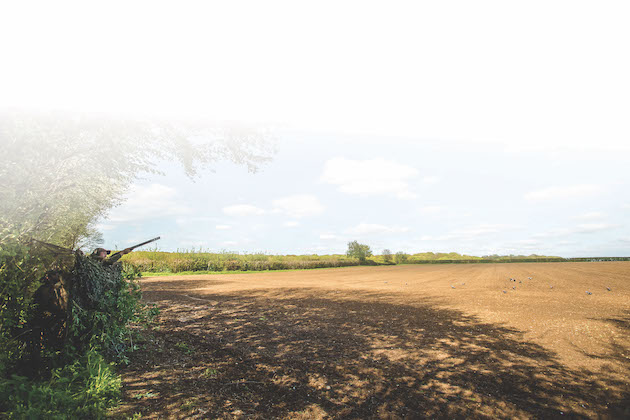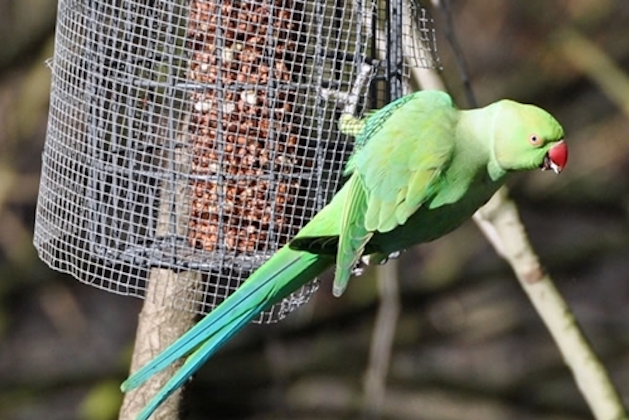What you need to know about the new 2021 general licences for England
David Frost, Sporting Gun’s legal expert, takes you through the salient changes and what you can and cannot do to control pest bird species

If you shoot any birds that are considered pests you must stick to the new rules
The new 2021 general licences for England came into effect from 1 January and are valid for this calendar year. They were announced by Defra in November after the withdrawal and subsequent reinstatement following a challenge by Wild Justice.

You cannot control birds to protect wild pheasants nesting in the wild
New 2021 general licences in detail
GL40 Conservation of endangered wild birds or flora and fauna
This replaces GL34 and the main difference is apparent in the title. The previous licence covered activities for conserving all wild birds; now you may only use it to conserve endangered wild birds. These are defined as birds of conservation concern which appear on the red (67 species) or amber (96) list. Numerous species, especially of garden birds, which are on the green list are no longer included because they are not regarded as endangered. Nor does it allow control to assist pheasants and red-legged partridges nesting in the wild. The species that may be controlled for the benefit of all endangered wild birds are Canada and Egyptian geese, carrion crow, magpie, and monk and ring-neck parakeets. Jays may be controlled only to conserve endangered woodland birds (of which 20 are listed). Sacred ibis and Indian house crow, neither of which have yet appeared in the UK, are on the list. Only Canada geese may be controlled to conserve both flora and fauna and ring-necked parakeets to conserve fauna.
GL41 Preservation of public health or safety
Canada geese and feral pigeon may be controlled to prevent slips and falls, spread of human disease and issues with birds nesting. Jackdaw and monk parakeet may be controlled to prevent issues with birds nesting. This replaces GL35.

Ring-necked parakeets are included on GL40 and GL41
GL42 Prevent serious damage to livestock, feedstuffs, crops, vegetables, fisheries
The species listed on this licence include all those on both GL40 and GL41 with the addition of rook and woodpigeon. There’s a complicated table in the licence covering livestock – direct attack; livestock – feedstuffs and spread of disease; crops, fruit and vegetables; fisheries; and inland waters. There is no species in the table that can be taken to cover all the listed damage scenarios, so you will need to study the table in detail if you wish to use this licence, which replaces GL36.’
Much change?
It would be nice to be able to say the new 2021 general licences don’t differ much from their predecessors and superficially that is so but, as always, the devil is in the detail. If you intend to rely on one of the licences for pest bird control you must read it carefully to ensure you are conforming to the new law.
Each licence is 11 pages but many features are common to all of them.
Alternative lawful methods of control
Before using any licence you must be satisfied that you have made reasonable efforts to achieve the conservation aim using alternative lawful methods. You should continue to use those efforts even while relying on the licence unless the alternative methods are impractical, without effect or disproportionate in the circumstances, even if the quarry species has become habituated to them. What is or is not practical will vary widely with the circumstances. Each licence gives examples of: exclusion techniques; habitat management; livestock and crop management; and audio-visual deterrents. Some verge on the weird and wonderful.
Authorised person
You may only use the licences if you are an authorised person. Typically, this means the owner or occupier of the land or someone authorised by them. Licences may not be used by anyone convicted of a wildlife offence after 1 January 2010 unless the conviction is spent.
Permitted activities
All three licences permit the killing or taking of the wild bird; taking, damaging, or destroying its nest; and taking or destroying its eggs. The methods you may use are pricking or oiling eggs; destroying eggs and nests by hand; targeted falconry; shooting with any firearm; trapping with a cage trap; or using a hand held or hand propelled net for birds not in flight.
Use on Sites of Special Scientific Interest (SSSIs)
Unless you’re a Section 28G authority — essentially a government body, as defined under the Countryside and Wildlife Act 1981 — you can only use the licences on SSSIs if you or the landowner have a written consent from Natural England. There are additional conditions that apply if you intend to use the licence on a protected site or its buffer zone. At the time of writing any of these have yet to be issued.
Record-keeping
Hitherto this has simply been a matter of good practice but the new licences place considerable emphasis on it and, although it is not a legal requirement, you would in future be most unwise not to keep detailed written records. These records should include the date, time and place where the authorised action was taken; the species concerned and the conservation purpose; the number of birds killed and eggs or nests destroyed for each species and purpose; and the methods used. Records should be kept for three years from the date an action was taken and you should be able to produce these records on request.
Conclusion
Some of the changes are significant and everyone will need to review the way they control pest bird species. Rook and jackdaw are off the conservation licence and other corvids may only be controlled to help red- or amber-listed birds. No gulls are included. If you need to control other species, or licensed species for other reasons, you will need to apply to Natural England for an individual licence. Given its previous abysmal performance in regard to the licences, this is not an encouraging prospect.
Animal welfare
- Birds must be killed with a single swift action.
- If you are using a trap you must comply with GL33, the updated version of which became effective from 1 January.
- Traps must be inspected at least once every 24 hours and decoy birds properly cared for.
- You are encouraged to control pest species outside their breeding season rather than during it in case there are dependent young.








